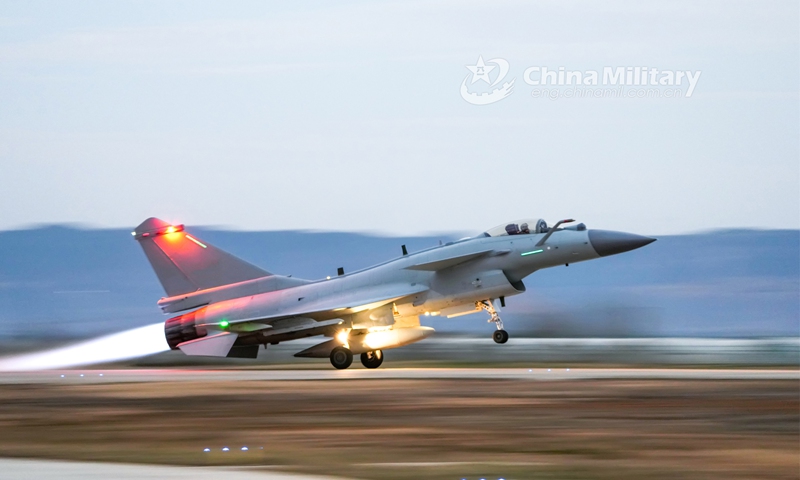China and Thailand recently wrapped up joint air combat exercises held in Thailand featuring advanced aircraft from both sides, with experts saying on Sunday that the drills boosted the combat and joint operational capabilities of both countries’ aviation forces with the sharing of experiences valuable to each other.
The Falcon Strike-2023 joint exercise between Chinese and Thai air forces concluded with a ceremony on Thursday, China Central Television (CCTV) reported on Saturday.
During the joint drills that lasted for 21 days in Thailand, participating troops from both countries carried out training subjects including air support, land assault, joint air defense and large-scale deployment, which effectively enhanced their combat and joint operational capabilities, CCTV reported.
Both sides committed to training under actual combat standard, increased proportions of free air combat, night confrontation and systematic combat as part of the drills.
Surface-to-air missile units carried out mock air defense missions based on air conditions in real time.
A special operations unit was tasked to parachute to designated area to conduct reconnaissance and guide warplanes to engage in precision land attacks as a part of the exercise.
Combat elements from both sides are relatively all-rounded in this exercise, Zhang Shengcan, a People’s Liberation Army (PLA) Air Force pilot who took part in the drills, said in the report.
“Thai pilots’ tactical maneuvers were fierce and fearless during air combat, which deeply impressed me,” Zhang said.
The Chinese side took some good experience and approaches that could provide value in boosting training efficiency and combat capability, Zhang said, standing in front of a J-10C fighter jet.
Chinese fighter jets, fighter bombers, early warning aircraft and surface-to-air missile units joined forces with multiple aircraft types from the Thai air force, CCTV report said.
According to the report, the Chinese side sent warplanes including the J-10C fighter jet, the JH-7A fighter bomber and the KJ-500 early warning aircraft of the PLA Air Force and the J-11B fighter jet in the painting of the aviation force of the PLA Navy.
Thai aircraft that took part in the exercise include the Saab JAS 39 Gripen, the Alpha Jet and the Saab 340 early warning aircraft, the Bangkok Post reported on July 17.
Both countries sent some of their main combat aircraft in active service to join the exercises, and the involvement of different types of aircraft indicated the formation of comprehensive combat systems in the drills, a Beijing-based military expert who requested anonymity told the Global Times on Sunday.
It shows a high level of exchange, cooperation and mutual trust between China and Thailand, the expert said.
Thailand uses aircraft of Western origins and adopts combat tactics based on a Western model, and they could be good additions to the PLA’s domestic training program in China. On the other hand, Thai pilots also get the chance to see Chinese technologies and combat approaches, which could spark some ideas for them as well, observers said.
The Falcon Strike 2023 marked the sixth China-Thailand joint air combat exercise, and through these joint drills both sides improved their combat capabilities and collaboration, which is conducive to enhancing the two countries’ military cooperation and the safeguarding of regional peace and stability, CCTV reported.
In addition to the air combat exercise, China and Thailand are also expected to hold an army exercise and a navy exercise from August to September in Thailand, the Bangkok Post reported.
Frequent and routine interactions show the increasingly deepening military cooperation between the two countries, analysts said.




